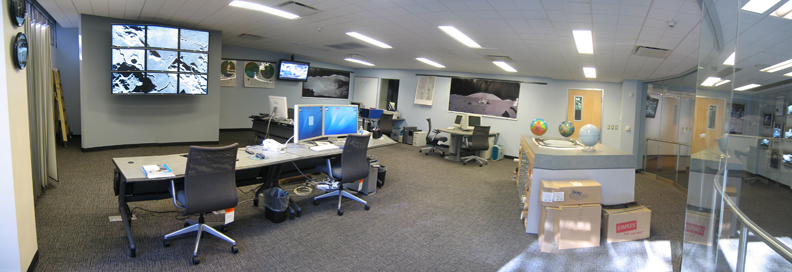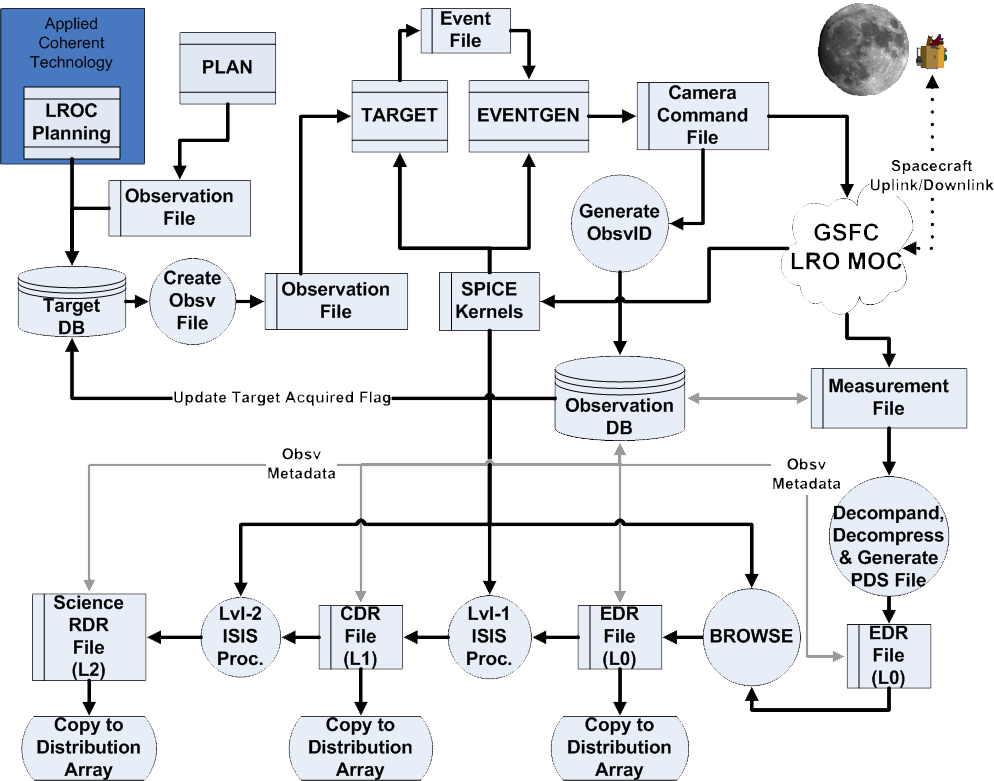Greetings, I am Ernest Bowman-Cisneros, the Lunar Reconnaissance Orbiter Camera (LROC) Science Operations Center (SOC) manager. I have worn many hats during the lifetime of this project, but now that we have celebrated the second anniversary of the launch of LRO and nearly two years of operations, I can look back to the beginning of the LROC SOC.
I arrived on the Arizona State University (ASU) campus in the summer of 2006, to begin the job of turning the written description of the LROC SOC into a reality. The biggest initial task was the renovations of what would become the office and work space for the LROC Team at ASU. Many people were involved in the design of the physical space, actual renovations and furnishing of the space. This process required thinking about how the space would be used, where to put the furnishings (desks, maps, cases and bookcases), locations of large TV monitors for the display of images and instrument telemetry, and how visitors to our facility could view the staff performing their duties.


Once the SOC was completed and ready for occupancy, I first began the task of hiring new staff to perform all the development tasks needed to support the camera as well as hiring operations staff. I needed to have software developers to write applications to perform data processing and analysis and telemetry processing as well as numerous other applications that would be needed during the mission. Next, I needed to hire system administrators to install, configure, and manage all the computer systems that would be used during the mission. Finally, operations staff would be hired that would perform the day-to-day operation of the LROC instrument. We also had undergraduate and graduate students working alongside the staff, getting ready for the mission. This was a very exciting time as new staff came on board, went through training on the LRO spacecraft and mission and the LROC instrument, and figured out how we would perform all procedures needed to operate a camera in orbit around the Moon. A lot of hard work was put in by our SOC Team as we all prepared for the eventual launch of LRO. Most of the people hired during this time are still with us, while some of them have gone off to other jobs and/or school.

After launch, my role switched from that of development of staff, software, and procedures to overseeing the actual operation of the LROC instrument. This required many long hours of monitoring incoming data and telemetry, diagnosing problems then implementing solutions, and modifying procedures as we gained knowledge about how the LRO spacecraft and LROC instrument actually behaved in orbit. The most exciting moment was late one night as the first images were received from Goddard Space Flight Facility (which controls the LRO spacecraft), processed through our software and we began to see the lunar surface in high resolution. After two years, we still perform many of these same tasks, but operations are now more routine. There are still new and interesting problems that come up, so there is never a dull moment in the SOC!
Come visit the LROC SOC and see us in action (http://lroc.sese.asu.edu/EPO/Tours/tours.php).
Published by Ernest Bowman-Cisneros on 18 July 2011